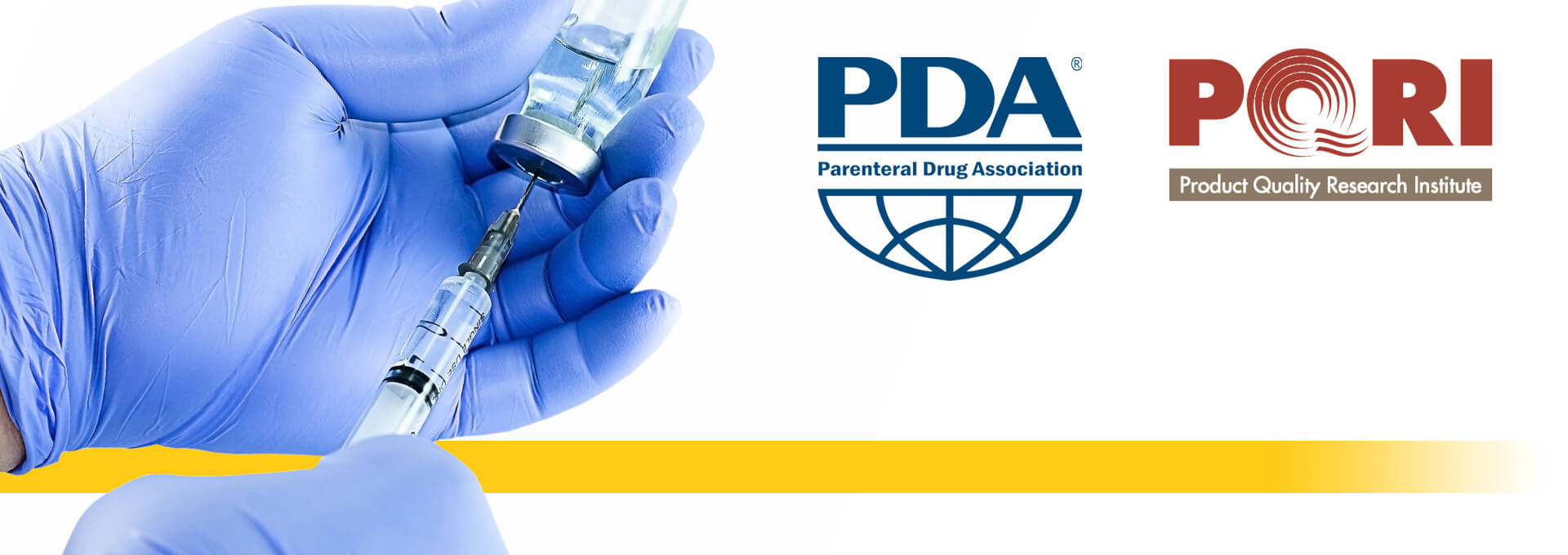The Evolution of USP <800>: A Q&A with Cathy Zhao and Allison Radwick

The PDA Letter talked with Cathy Zhao, Director of Scientific Insights Lab, and Allison Radwick, Scientific Affairs Manager, from West Pharmaceutical Services about closed system transfer devices and the evolution of USP <800> Hazardous Drugs—Handling in Healthcare Settings. Cathy is also a member of the PQRI working group that they mention. Below are their responses.
PDA Letter: Can you tell us a little about the history of USP <800> Hazardous Drugs—Handling in Healthcare Settings?
In the early to mid-1970s, it was discovered that many chemotherapy drugs were indeed hazardous drugs. They could cause skin rashes, hair loss, infertility, miscarriage, birth defects and even leukemia and other forms of cancers. In 1981, after over 10 years of conformational research, the U.S. National Institute of Occupational Safety and Health (NIOSH) issued Recommendations for Safe Handling of Injectable Antineoplastic Drug Products, which recognized inhalation and direct skin contact as high-risk routes of exposure and recommended the use of Class II biosafety cabinets when compounding antineoplastic drugs. These recommendations from NIOSH were recognized as an official publication in 1983 and updated in 1999.
In 1985, the American Society of Health-System Pharmacists (ASHP) published a technical bulletin on handling cytotoxic drugs in hospitals. The bulletin was updated in 1990 and included the first use of the term “hazardous drug,” instead of cytotoxic drugs or antineoplastic drugs.
In 1986, U.S. Occupational Safety and Health Administration (OSHA) released guidelines for cytotoxic (antineoplastic) drugs. It only made recommendations, with no mandatory standards. In 1995, OSHA released Controlling Occupational Exposure to Hazardous Drugs, which included the expanded definition of “hazardous.” In 1999, OSHA amended its guidelines and recommendations by adding periodic testing, proper personal protective equipment, using ventilated cabinets, closed system transfer devices (CSTDs) and needleless devices, etc.
In 2004, NIOSH published its NIOSH Alert: Preventing Occupational Exposure to Antineoplastic and Other Hazardous Drugs in Health Care Settings, which required the safe handling of hazardous drugs at all steps of the medication use cycle. The hazardous drug list was updated in 2010, 2012, 2014, 2016 and 2018, and the 2020 list is currently in draft form.
In 2008, USP <797> Pharmaceutical Compounding – Sterile Preparations was updated to include a specific section for hazardous drug (HD) preparation to resolve conflicts with the NIOSH Alert. However, its scope was limited to sterile preparations.
Until then, it was still a challenge to prevent exposure of healthcare workers to HD. There was a lack of clear evidence of HD effects until 2010, when the Journal of Occupational and Environmental Medicine published two studies:
- The first was a study of antineoplastic drug exposure to U.S. healthcare workers at three university-based health centers that showed continuing surface contamination in pharmacy and nursing areas despite HD handling guidelines.
- The second study reported that the exposure to HDs led to healthcare workers sustaining damage to those chromosomes related to secondary cancers in treated patients.
In April of 2011, OSHA, NIOSH and The Joint Commission sent a jointly drafted letter discussing the safe handling of HDs.
Meanwhile, in 2010, an investigative reporter wrote a report entitled “Lifesaving Cancer Drug May Put Workers’ Lives at Risk” that exposed the tribulations of Sue Crump, a Seattle-based pharmacist who died at age 55 of pancreatic cancer. This report had its desired effect, resulting in the Washington State legislature passing two HD rules in 2012: one setting requirements for handling HDs, the other establishing an HD workers’ registry to track adverse experiences.
General HD compounding was part of the work plan in the 2010-2015 USP Council of Experts cycle. The purpose was to create a single guidance standard for the safe handling and compounding of HDs that would apply to sterile and nonsterile compounds on top of USP <795> and USP <797>. The result was USP <800>. Most of the USP <800> requirements had been recommended for more than 30 years, but USP <800> formalized those recommendations and best practices and established a minimum standard. In March 2014, USP posted a proposed General Chapter <800> Hazardous Drug – Handling in Healthcare Settings on its website and in the May-June issue of Pharmacopeial Forum to more fully cover the handling of HDs in both sterile and nonsterile compounds. Public comments closed on July 31, 2014, and a revision incorporating the comments was posted in December 2014. USP <800> was published on February 1, 2016. Its revision bulletin was published on May 31, 2019, and it became effective on December 1, 2019.
PDA Letter: What are the issues for closed system transfer devices (CSTDs)?
Early in the year, we published “5 Challenges of Closed System Transfer Devices” in the PDA Letter to address the issues for CSTDs:
- Lack of standards, guidances or requirements for functionalities of CSTDs
- Closed system design magnifying problems of current vial transfer devices, such as high forces and drug hold up volume
- New challenges in vial transfer devices applications, such as stopper intrusion or device breakage
- Performance differences as the result of design differences
- No measurement method of CSTD efficacies covering all CSTD types, including product agnostic (hold-up volume and stopper coring/fragmentation and product specific), drug product compatibility and duration of drug product in contact with the CSTD
PDA Letter: PDA is sponsoring a Product Quality Research Institute (PQRI) working group. What is the group doing and who is involved?
Both the pharmaceutical market and regulatory agencies are driving the use of CSTDs in HD preparation and administration. Pharmaceutical companies have been receiving an increasing number of complaints on the incompatibility of their drug product with transfer devices. According to the U.S. Food and Drug Administration (FDA) MAUDE database, from July 1, 2018, to July 31, 2019, there were 535 complaints about the use of CSTDs; among these, 411 complaints were device-related problems and 71 complaints were related to container closure. It became clear when looking for guidance and standards that, while high standards in general were found, neither guidance nor standards specific to vial adapter design and application were available. Attaining effective safety standards is a challenge to the industry.
In 2018, Eli Lilly and West Pharmaceutical Services started to build a cross-company working group on the interconnectivity of vial container closure systems and transfer devices under PQRI to examine the interconnectivity of a vial and transfer device. PDA is sponsoring this project. The group’s objectives are:
- Raise awareness within the key stakeholder communities of the necessity to evaluate the performance characteristics of transfer devices when used with vial presentations (e.g., penetration force, coring/fragmentation, interconnectibility).
- Establish a common understanding of user requirements, usability criteria and instructions for use pertaining to the connection between vial systems and vial transfer devices.
- Develop appropriate guidance for performance attributes of vial container closure system (CCS)/vial transfer device connections. These may be implemented through appropriate and recognized institutions (e.g., USP, Ph. Eur., ISO).
- Raise awareness of performance requirements of existing vial CCS/vial transfer device connections within the healthcare provider and patient communities to ensure positive outcomes, to reduce risk where possible and to alert users to potential hazards.
- Develop appropriate design guidance for manufacturing and evaluation of new vial CCS/vial transfer device connection components to mitigate performance risk as early in the design and development process as possible. These may be implemented through appropriate and recognized institutions (e.g., USP, Ph. Eur., ISO). Alternately, proposals for appropriate language for inclusion in vial presentation or vial transfer devices instructions for use may be considered within the scope of the project.
At this time, the PQRI working group has members from 18 manufacturers, including nine pharmaceutical companies, six device manufacturers, and three vial component manufacturers. There are PQRI committee members from regulatory agencies such as the FDA, Health Canada and USP. PQRI continues to recruit end-users who are healthcare providers.
PDA Letter: How can CSTDs harm healthcare workers? Does USP <800> help?
CSTDs are designed and made to meet USP <800> requirements by containing HDs during drug compounding for both sterile and nonsterile uses. There are about a dozen CSTDs on the market right now. Due to the general nature of the requirements governing CSTDs, there are a variety of configurations and significant differences in their designs, performance and compatibilities with vials and drugs. Some CSTDs require a very high connection force when they are connected to the drug vials. These require a physical force that can cause repetitive motion injuries to healthcare workers, which may require surgery treatment, such as a carpal tunnel release. Some CSTDs push the vial stopper into the vials, causing splashes. This not only exposes the healthcare workers to the HD and may even waste the entire vial of the drug product but leads to drug loss and waste. Some CSTDs break more easily than others. Some CSTDs bring more particulates into the drug than others and even cause protein aggregation.
PDA Letter: Does the formulation of an elastomeric closure impact the attachment force?
Yes. The formulation of the elastomer closure also impacts the attachment force/connection force. A CSTD interacts with the vial stopper in two ways during the connection: The CSTD spike punctures the center of the stopper, and its wings compress the edge of the stopper. Elastomer properties, such as modulus and elasticity, will impact the attachment/connection force.
PDA Letter: What are some of the deliverables from the PQRI project? Is there a timeline?
Some deliverables from the PQRI project include:
- Raising awareness of gaps and challenges through publication on PQRI, PDA and other open-access sources and workshops
- Developing procedures and processes to evaluate the use of transfer devices with vials and bring the instructions-for-use and user requirements into the scope of vial transfer system evaluation and usage
- Defining and promoting best practices for system design, application and use, and developing standardized test methods to test vial transfer systems
- Defining best practices for the pharmaceutical industry and healthcare providers for system selection
The project group has developed a working plan with sub-teams working on each step with specific timelines. The plan covers four to five years of activities. In 2020, there are four major activities:
- Identify and recruit key stakeholders: Continuously since 2018, and still ongoing, recruiting representatives of end-users.
- Compile complaints filed to separate manufacturers (complaints cleansed of proprietary information) for trend analysis. Q1 – Q3 2020
- Develop user requirements and usability criteria for vial CCS/vial transfer device connection based on healthcare provider and patient use. Use analysis techniques, such as failure mode and effects analysis, to evaluate and categorize risk. Translate established user requirements, usability requirements and risk into connection system requirements. Q4 2019 – Q1 2020
- Draft a publication to post on the PQRI website and in open-access journals to raise awareness of the issues and proposed work. Organize a workshop. Q2 – Q4 2020
References
- Zimmerman, P F, et al. «Safe Handling of Injectable Antineoplastic Drug Products.» Am J Hosp Pharm 38, no. 11 (1981): 1693-95.
- National Institutes of Health. Recommendations for the Safe Handling of Parenteral Antineoplastic Drugs. U.S. Department of Health and Human Services (Bethesda, MD: 1983).
- National Institutes of Health. Recommendations for the Safe Handling of Cytotoxic Drugs. U.S. Department of Health and Human Services (Bethesda, MD: 1999).
- American Society of Hospital Pharmacists. “ASHP Technical Assistance Bulletin on Handling Cytotoxic Drugs in Hospitals.” Am J Hosp Pharm 42, no. 1 (1985): 131–37. https://doi.org/10.1093/ajhp/42.1.131.
- American Society of Hospital Pharmacists. “ASHP Technical Assistance Bulletin on Handling Cytotoxic Drugs in Hospitals.” Am J Hosp Pharm 47, no. 5 (1990): 1033–49.
- Occupational Safety and Health Administration. “Chapter 21: Controlling Occupational Exposure to Hazardous Drugs.” In OSHA Technical Manual (OSHA Instruction Cpl 2-2.20b Ch-4). Washington, D.C.: OSHA, 1995.
- Occupational Safety and Health Administration. “Chapter 11: Categorization of Drugs as Hazardous.” In OSHA Technical Manual (Ted 1-0.15a, Sec Vi). Washington, D.C.: OSHA, 1999.
- National Institute for Occupational Safety and Health. NISOH Alert: Preventing Occupational Exposures to Antineoplastic and Other Hazardous Drugs in Health Care Settings. U.S. Department of Health and Human Services (Atlanta, Ga.: 2004). https://www.cdc.gov/niosh/docs/2004-165/.
- U.S. Pharmacopeial Convention. “General Chapter <797> Pharmaceutical Compounding—Sterile Preparations.” In USP 42–NF 37 6959. Rockville, Md.: USP, 2020.
- Connor, T H, et al. «Evaluation of Antineoplastic Drug Exposure of Health Care Workers at Three University-Based Us Cancer Centers.» J Occup Environ Med 52, no. 10 (2010): 1019-27.
- McDiarmid, M A, et al. «Chromosome 5 and 7 Abnormalities in Oncology Personnel Handling Anticancer Drugs.» J Occup Environ Med 52, no. 10 (2010): 1028-34.
- Smith, C. “Lifesaving Cancer Drug May Put Workers’ Lives at Risk. InvestigateWest Jul 9, 2010. https://www.invw.org/2010/07/09/chemo-main/
- Washington State Legislature. “Washington State Senate Bill 5594.” In 62nd Leg, 2011 Regular Session. Tumwater, Wash.: Department of Labor & Industries, 2012. https://apps.leg.wa.gov/documents/billdocs/2011-12/Pdf/Bills/Senate%20Bills/5594.pdf
- Washington State Legislature. “Chapter WAC 296-62-500, Part R: Hazardous Drugs, Safe Handling Practices.” In General Occupational Health Standards. Tumwater, Wash.: Department of Labor & Industries, 2015. https://www.lni.wa.gov/safety-health/safety-rules/rules-by-chapter/?chapter=62#WAC_296_62_500
- Washington State Legislature. “Chapter WAC 296-800: Safety and Health Core Rules.” In Safety & Health Rules. Tumwater, Wash.: Department of Labor & Industries, 2018. https://app.leg.wa.gov/wac/default.aspx?cite=296-800
- U.S. Pharmacopeial Convention. “General Chapter <795> Pharmaceutical Compounding–Nonsterile Preparations.” In USP 42–NF 37, 6951. Rockville, Md.: USP, 2019.
- U.S. Pharmacopeial Convention. “General Chapter <800> Hazardous Drug – Handling in Healthcare Settings.” In USP 43–NF 38, 7071. Rockville, Md.: USP, 2015.
- Zhao, C and Radwick, A. 5 Challenges of Closed System Transfer Devices Manufacturing Science. PDA Letter Jan 07, 2020. https://www.pda.org/pda-letter-portal/home/full-article/5-challenges-of-closed-system-transfer-devices
- “Manufacturer and User Facility Device Experience Database (Maude).” MAUDE Database, FDA, Updated Jul 16 2020, https://www.accessdata.fda.gov/scripts/cdrh/cfdocs/cfmaude/search.cfm
- “Product Quality Research Institute.” PQRI, PQRI, Updated July 16, 2020, 2020, https://pqri.org/



 Cathy Zhao has worked in the medical device and pharmaceutical packaging industry for more than 18 years. She has been at West for 14 years and, prior to that, worked as a Principal Materials Scientist for almost five years at Becton, Dickinson and Company. She received a BS in polymer chemistry from the University of Science and Technology of China, and an MS and PhD in polymer chemistry from City University of New York. In the past four years, she has lead application research at West to solve problems and fill gaps in customer applications. The application in CSTDs is one of the areas where there are industry gaps and challenges.
Cathy Zhao has worked in the medical device and pharmaceutical packaging industry for more than 18 years. She has been at West for 14 years and, prior to that, worked as a Principal Materials Scientist for almost five years at Becton, Dickinson and Company. She received a BS in polymer chemistry from the University of Science and Technology of China, and an MS and PhD in polymer chemistry from City University of New York. In the past four years, she has lead application research at West to solve problems and fill gaps in customer applications. The application in CSTDs is one of the areas where there are industry gaps and challenges. Allison Radwick has been at West for a year and half with over 20 years of experience in pharmacy and the pharmaceutical industry. She received a BS in pharmacy with a minor in psychology from the University of the Sciences in Philadelphia, and a PhD in pharmaceutical sciences from the University of Connecticut. She has hands-on clinical and pharmaceutical science expertise in sterile and nonsterile pharmacy compounding with hospital, retail, home infusion, ambulatory care, academia, industry and clinical trials.
Allison Radwick has been at West for a year and half with over 20 years of experience in pharmacy and the pharmaceutical industry. She received a BS in pharmacy with a minor in psychology from the University of the Sciences in Philadelphia, and a PhD in pharmaceutical sciences from the University of Connecticut. She has hands-on clinical and pharmaceutical science expertise in sterile and nonsterile pharmacy compounding with hospital, retail, home infusion, ambulatory care, academia, industry and clinical trials.